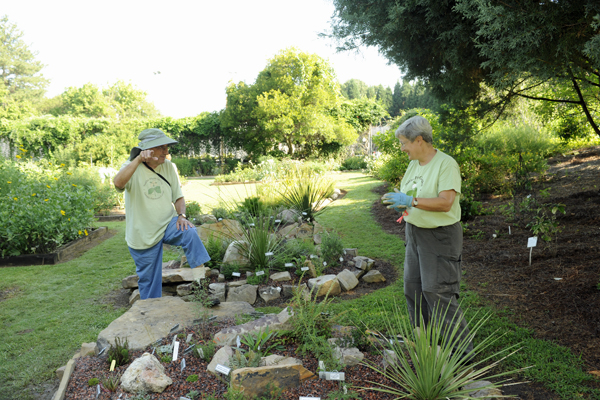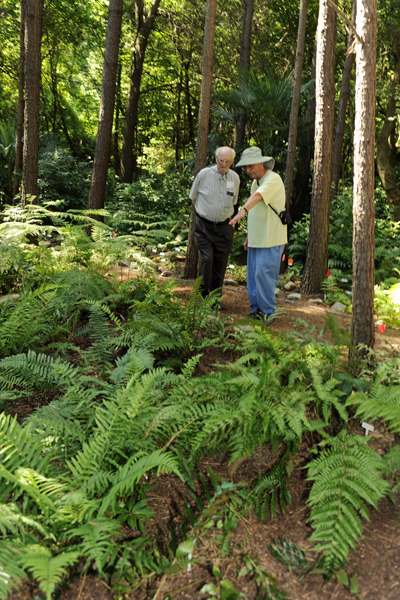
George Sanko, left, will lead a tour of GPC's Native Plant Botanical Garden at 2:30 p.m. on Sunday, April 19.

The Botanical Garden's fern collection has been internationally recognized.
GPC to mark 25th anniversary of Botanical Gardens
He calls himself the CEO of all things botanical at Georgia Perimeter College’s Native Plant Botanical Gardens, as well as a teacher and plant educator. There is little doubt George Sanko is also the Decatur Campus garden’s most recognizable volunteer.
On Wednesday, April 22, GPC will celebrate Sanko—and the native plant garden he created 25 years ago—with special garden walks, a plant sale, raffle and cookout from 10 a.m. to 3 p.m. Daily guided garden walks also are planned daily April 19-25; see schedule of events.
Sanko has been associated with Georgia Perimeter College for almost half a century. He served as a botany professor for 25 years, retired from full-time work in 1989 and then taught part-time. When he left the classroom, he began volunteering—applying his hours and energy toward clearing what is now the garden land.
The property—two thirds of which is in a flood plain—was a wasteland of overgrowth and trash. Sanko, aided by students and other volunteers, has spent the past 25 years shaping that property into the GPC’s Native Plant Botanical Garden.
The garden has become well-known nationally for its collection of North American native plants; in 2011 the fern garden was also recognized by the British Pteridological Society and its American counterpart, the Hardy Fern Foundation. The garden was recognized that year by the foundation as the best in the United States, and Sanko was recognized personally in 2011 with an “Award of Excellence” from the National Garden Clubs in Washington, D.C.
Sanko already was delving into understanding native plants before such gardening became the national rage. Over the years, he has taken gardening aficionados on trips across the country, sourcing plants native to the continental United States, from the mountains of Tennessee to the deserts of Arizona.
“I wanted to know everything about them,” he says. Trillium and native azaleas soon became the backbone of an extensive shade garden he calls his “spring ephemerals.”
Sanko began collecting ferns in the early 2000s, part of his dream to create a garden that is large, diverse and—most importantly—different from other gardens. He wanted the garden to be a teaching garden for students and the community.
Sanko is keen on keeping the garden true to its mission of educating those who visit. During the fall and spring, guest speakers (including Sanko) give tours of the garden and provide lectures on various plants and their care. In the past year, Sanko and his volunteers changed the format of the sun gardens, installing winding paths and removing the square bed format that characterized the garden for more than a decade. While the original square beds held visual appeal, Sanko had eyed the visitors’ experience in the garden as a teacher.
“I would watch people come in to the garden for quite a few years with the square beds,” Sanko says. “You couldn’t see everything, you couldn’t see the labels. That was wasted from an educational standpoint. We rearranged it so people could teach more about the collection and so visitors could also feel and see the botanical name and a person could break off a flower if they wanted to. You need to get near something in order to learn about it.”
